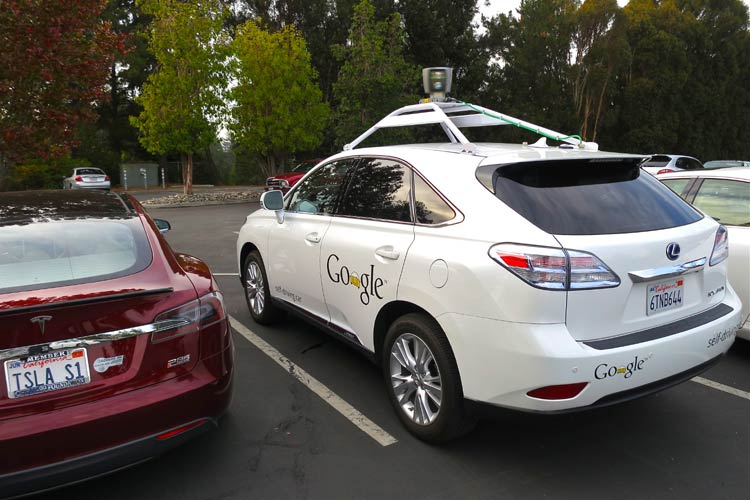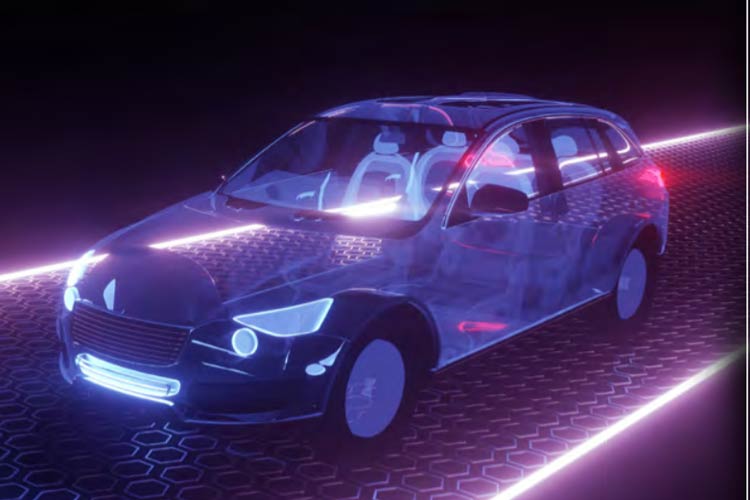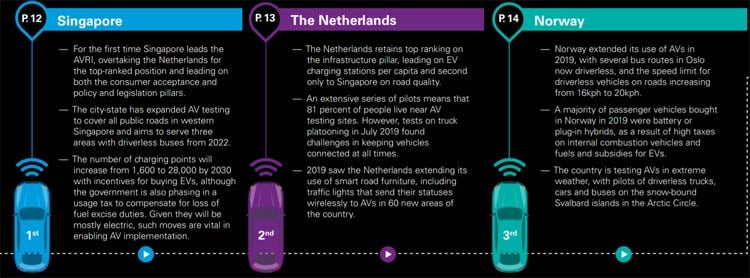
The automotive sector is now pushing for a quantum shift to a future, where chauffeurs will have a very smaller or a basic role in driving and will be a complete exclusion in the coming time. The self-driving technologies and processes are furnished with several hurdles such as taking swift decisions in different and difficult conditions that may comprise moral dilemmas as well. On the other hand, Their potential is very imperative in diminishing environmental pollution by optimizing their methods of driving, routes, by communicating with other cars, infrastructure, and their environment. Then, there is a big gap in the ongoing regulations and the self-driving technology level, which shows a constant reducing trend. Now, most importantly, experts think that the major worry is in case of impending accidents management concerns are being raised about the potential of crafting accurate decisions. This technology has now turned out to be sophisticated and technically available and in a few instances, it can be implemented for commercial cars as well.
The current R&D stage clearly states that the matter is still foggy about how autonomous vehicles will be able to counter rough and intricate situations as most of the accidents are spearheaded by humans. It is now speculated that the commencement of self-driving technology will decrease the road mishaps in both gravity and volume, but unfortunately, tests conducted have not been able to justify or rather prove this matter yet. The escalating trend in vehicle automation will change the ingredients of this sector as mechatronics will not only be an essential part of the auto industry, but also a complementary part of it. Light Detection And Ranging (LiDAR), Artificial Intelligence(AI) software, and RADAR sensing are further used to supervise the 60-meter range around the vehicle and to craft a 3D map of the current atmosphere. The software and sensors are integrated to control, drive the car, and navigate.
The Growth and Countries Leading the Race
Although the technology is developing every year and yet to be deployed on the road, the international growth back in 2019 was speculated at $54.23 billion, and by the end of 2026, it is expected to push for $556.67 billion, according to Allied Market Research. On the other hand, between 2021-2026, at a CAGR of 22.7 percent, the revenue and market volume of this sector is projected to grow from USD 23.33 Billion in 2020 to reach USD 64.88 Billion by 2026, claims Facts and Factors market research.

Through the use of IoT, the increasing demand for connected vehicles and the enhancement of smart cities helps in countering the obstacles of traffic congestion, and further, the growth of this sector is impacted. Moreover, the love for luxury cars, increasing cost, government regulations, development in the automobile industry, and hackers providing threats in operations of driving also infects the growth of the international autonomous car market. Performance of the drivers is improved via IoT by getting the actual feedback from the connected car’s inbuilt high speed in-memory computing systems. These systems offer innovative features like storing, collecting, and analyzing data for taking correct decisions. Connected vehicles’ increasing demand would push for profitable opportunities for semi-autonomous and autonomous vehicles.
A new survey report from IoT Analytics and KPMG reveals that this technology has been mostly adopted by the Netherlands as the country is almost ready to unveil self-driving cars, followed by the US, Singapore, and China that ranks sixth. There are proper reasons why the Netherlands ranks first in adoption. The roadway infrastructure is nonpareil with omnipresent cutting-edge wireless technology and the largest support for electric vehicle charging stations. In fact, a couple of years back, a bill has been issued by the Netherlands government that permits huge volumes of testing and experimentation of these vehicles on public roads and there is an alliance among several European nations to support this deployment across borders. Now, Singapore, which stands second in this segment is bound by a huge public acceptance and legislative engagement, but on this segment’s development criteria, the country is yet to progress. Although the US holds the lion’s share in the development of technology, the infrastructure needed for driverless cars still lags behind.

Source: KPMG survey
Now, there is a requirement for public and private sectors to join this sector and all the stakeholders must be on the same platform, which will assure deployment is moving on with the public policy. Innovation is highly required, but devoid of top-notch mobile networks and good quality roads it is not possible. During the first quarter of this year, the government of the UK proclaimed a permit for self-driving cars on public roads at lower speed. The authorities stated that for the safe driving of these cars, they are using Automated Lane Keeping Systems (ALKS) that utilizes software and sensors to keep cars in a fixed lane aiding them to brake and accelerate without any kind of chauffeur input.
Challenges of Deploying Self-Driving Vehicles
Last year, automobile tycoon Elon Musk, owner of Tesla stated that his firm’s self-driving car will be on the road by the end of the year, but however, of late, he told media, there are no fundamental challenges remaining. There are many small problems. And then there’s the challenge of solving all those small problems and putting the whole system together. Initially, it unveiled the beta version of its new self-driving software, but then pulled it off. The problem lies in testing, all the configurations of a full-fledged autonomous vehicle. This major conundrum persists on this technology by automobile giants such as Hyundai, Ford, and GM and for tech firms like Amazon's Zoox robotaxi subsidiary, Google's Waymo subsidiary, and Apple.
Although companies like Tesla carried out a transformative development in innovation, it has very limited autonomous potentials, including vehicles with limited self-driving features. For sensing the car’s surrounding environment, it depends on software and camera sensors, thereby leaving its autonomy at level 2. In fact, Google’s subsidiary Waymo operates a self-driving cab service in the Phoenix region and along with GM’s Cruise division, it obtained permission to carry passengers in California.
Sensors are the primary challenge as they are used to view the surrounding environment of the car. The distance between objects and vehicles are measured by lasers, while Radars track and detect an object’s speed and direction. Traffic congestion and abysmal weather conditions can adversely affect the sensing potential. Tesla’s radar is not that sophisticated to work in diverse weather. The challenge persists in choosing the appropriate sensors to detect all objects. Then, regulations regarding safety requirements are completely missing.
Experts feel that relying on a mapping system will be a huge impediment. As of now, a thorough 3D map is crafted by the search engine giant for a very limited number of test areas such as mountain view. In order to make it mainstream Google will have to maintain a detailed map across miles of public roads and update it accordingly. Tesla again opines that rather than mapping, autonomous cars should opt for sensor and image processing. Another barrier is the several intricate social interactions that driving requires, which are difficult for bots or robots to do now. For instance, a human driver on the way suddenly sees a pedestrian a few meters away from a crosswalk looking at his phone. In this case, human drivers can utilize their intelligence to find out whether the pedestrian would cross the road or stand in place.
A technology expert who wishes to be unnamed for this statement told CircuitDigest that the technology that is being used by Tesla or by other companies is not something new and is there for the last ten years, but there are oil companies lobbying and they are protecting their business first. If the deployment of these autonomous vehicles starts rapidly people will completely stop relying on oil-based vehicles. Then, oil companies, the biggest money-making business will hamper a lot. Companies like Ford that are now focused on self-driving cars are also launching the traditional models at the same time. From a technological perspective, there is no challenge, but it is on the market, audience, regulations, and the price factor.
Highlighting the challenges above, Satyajit Sinha, senior analyst, IoT Analytics said, “There are basically five layers of autonomous vehicles one such is no driver required at all, which is stage five. Tesla is at the third stage, that is driver assistance. For any technology to get deployed successfully, society needs to develop first. Standardisation is also important. For example, few companies are using different technologies, like someone is using LiDAR, others are using LADAR, 3D based technology etc.”
“Development of infrastructure is another roadblock for this segment. In India and in several Asian countries, people still cross the road when the signal is red and other than a zebra crossing. On the highways, lamp-posts are there, but they are not smart. They have the ability to send the information down the line that an emergency vehicle like an ambulance is on the way and the other cars can be kept aside. These are required for smart autonomous vehicles. The price of these vehicles is very high now as the technology is new and once the price comes to the average price of traditional cars there will be faster adoption,” added Sinha.
Most of the self-driving cars would use machine learning and AI to process the data that appears from the sensors as it will assist in taking or identifying the next actions. Objects spotted by the sensors will be identified by the algorithms of the data. This information will be used by the cars to take actions like braking or going forward. Unfortunately, there is now no assurance that machine learning would be safe for a vehicle to use. The automobile industry does not have an impeccable agreement on how machine learning could be validated, trained, or tested.
Semi-autonomous and fully autonomous cars have a lot of promises, but they require maturity for which there should be more advancements and innovation in AI and sensors, especially the latter’s fragility in countering the unpredicted. The local and state governments will now have to invest heavily in top-notch road management and maintenance so that these autonomous vehicles aren’t muddled by stretches of roads or construction areas where markings have faded.





